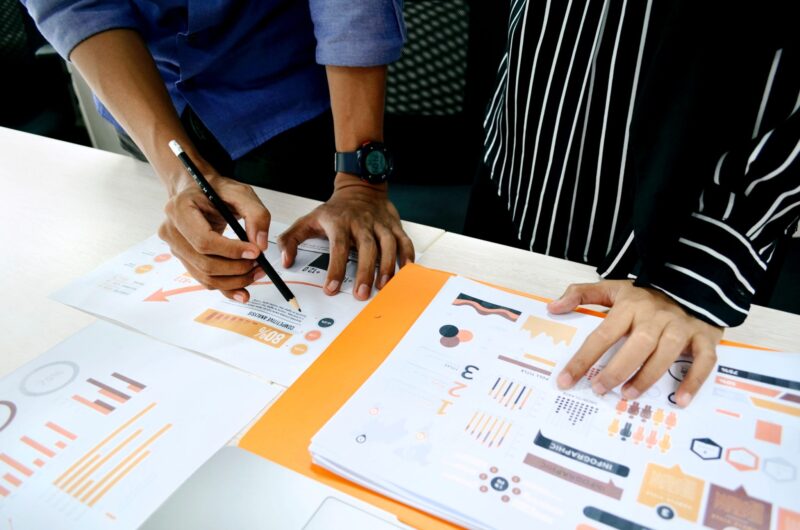Still figuring it out
Posted:
6 / 1 / 2022
Tagged:

Stewart Butterfield, CEO of digital communication tool Slack, recently stated that: “[for hybrid] we have 10% of the tools we need”.
A bold statement from someone whose company is a core facilitator of remote and hybrid work…
To unpack Butterfield’s somewhat damning indictment of our hybrid toolkit, at the heart of it Butterfield is alluding to set up. The set up of our homes, the set up of our offices, and even the set up of our cities. Our infrastructure caters to the generic nine to five, the places we inhabit are conveniently located to ease the commute, our offices are designed for productive desk-bound working, and our homes are designed for living.
During the pandemic, our carefully convened infrastructures were turned upside down. Kitchen tables became rudimentary war rooms, board meetings were conducted online, people were hired into close-knit teams remotely, and we all learned to work together whilst staying apart. The world of work shifted. Yet, as we step out of the pandemic and into a new era of working, our infrastructures have largely remained the same.
Remote work made some aspects of business easier.
In fact, half of us think we’re most productive when at home, and three in five (62%) agree that working remotely has had a positive effect on their wellbeing. With this in mind, it makes little sense to revoke the remote model entirely. It makes people happy and helps maintain a healthy work/life balance. Not to mention the fact that those who are unsatisfied with their current level of working flexibility are three times more likely to “definitely” look for a new job, compared to those who report satisfaction with their work flexibility.
Now, the working world must re-evaluate how to best utilize pandemic-era technology within post-pandemic spaces, and commercial real estate can really maximize this opportunity to re-vision the office. “In the hybrid-work-era office, the least valuable use of space is providing employees with spots to work alone on their laptops” says Butterfield. Instead, in the new world of working, meeting rooms, training program spaces, places to eat and socialize with colleagues aren’t just a nice-to-have, they’re the reason to come to work.
Recent stats reveal that more than a third of office workers (34%) have returned to working in the office five days a week, the highest numbers since June 2020. And, with stock in Zoom Video Communications Inc. falling a staggering 35% since the beginning of the year, optimism is high for a return to a more human way of working.
But old habits die hard…
There’s an underlying tone of frustration from those who have returned to the office. Namely, the “call culture” of the pandemic is still very much at large, with some disgruntled office workers describing coming to work as something akin to a call center: “you’re trying to talk and you’ve got five or six people around you also talking. It’s a horrible experience.” – Dave Murphy, IT management consultant.
According to Lauren Mason, senior consultant at Mercer, “companies need to be intentional about how and why people are going back to in-person work.” And it’s the intentionality of the return that’s key here. No one wants to feel that their commute was futile, nor do they want to come and sit in a room full of people on Zoom, unable to concentrate and feeling significantly less comfortable than at home.
So what are the practical steps that CRE can implement to appeal to the workforce of the future? Let’s break it down.
1. Connection
“A lot of people who are fresh out of college have a much higher desire to get back to the office – it’s the basis of their social life” – Butterfield. Combined with the fact that 67% of office workers feel less connected to their colleagues whilst working from home, what we’re seeing is a pattern of disconnection, and a real need for companies to reconnect.
Connection is crucial. It helps employees engage and forge human bonds, creating a greater sense of purpose. These nuanced human behaviors are difficult to simulate on Zoom or over email, making it vital that our office spaces are convened around the people who work within them.
Offices must take a leaf out of the domestic handbook and make the workspace as people-friendly as the home. In practical terms, that means screen spaces must be separate from talking spaces, there must be a mix of breakouts, meeting rooms, desks, and comfort zones in which employees can relax, eat lunch and chat. The space must encourage time to bond, to feel part of the team (this is especially true for new employees).
The ROI? Talent longevity. Ultimately, businesses depend upon people wanting to come into work. Without real, in-person interaction, it’s very hard to generate the employee engagement levels required to sustain long-term talent retention.

To be successful, a workspace must be human-centric, placing people before productivity. The spaces in which people feel most at ease are the spaces in which they will be most productive, as demonstrated by the uptick in productivity during the great WFH experiment.
“A lot of people who are fresh out of college have a much higher desire to get back to the office – it’s the basis of their social life” – Butterfield. Combined with the fact that 67% of office workers feel less connected to their colleagues whilst working from home, what we’re seeing is a pattern of disconnection, and a real need for companies to reconnect.
Connection is crucial. It helps employees engage and forge human bonds, creating a greater sense of purpose. These nuanced human behaviors are difficult to simulate on Zoom or over email, making it vital that our office spaces are convened around the people who work within them.
Offices must take a leaf out of the domestic handbook and make the workspace as people-friendly as the home. In practical terms, that means screen spaces must be separate from talking spaces, there must be a mix of breakouts, meeting rooms, desks, and comfort zones in which employees can relax, eat lunch and chat. The space must encourage time to bond, to feel part of the team (this is especially true for new employees).
The ROI? Talent longevity. Ultimately, businesses depend upon people wanting to come into work. Without real, in-person interaction, it’s very hard to generate the employee engagement levels required to sustain long-term talent retention.
2. Tech
The workspace is now a blend of personal and professional tech. We all use a mix of technologies to get the job done. From phones to tablets to laptops, this increasing tech-dependence means that occupiers now enter an office space needing additional tech support such as in-built wireless charging and portable battery packs.
What’s the use in coming to work if the Wi-Fi’s better at home? In a survey of over 8000 working adults, when asked to compare both home and office Wi-Fi, 51% said that their broadband connection is better at home than in their workplace, compared to a quarter (27%) who say it is better at work, and 22% who think the two are equal. A future-ready workplace must be able to match or, indeed, better the connectivity availability in the home. If the people can’t connect, they simply won’t commute.
Further, using technology to create a safe, healthy and seamless in-building experience is crucial. Features such as touch-free doors and cupboards are increasingly popular, as are internal monitoring systems that keep buildings at the right temperature and ensure airflow is kept at healthy levels. We live in a technologically enabled world awash with devices that need both charge and Wi-Fi to function – meaning that if the tech fails, people will simply wish they’d stayed at home.

51% think that their broadband connection is better at home than in their workplace.
The workspace is now a blend of personal and professional tech. We all use a mix of technologies to get the job done. From phones to tablets to laptops, this increasing tech-dependence means that occupiers now enter an office space needing additional tech support such as in-built wireless charging and portable battery packs.
What’s the use in coming to work if the Wi-Fi’s better at home? In a survey of over 8000 working adults, when asked to compare both home and office Wi-Fi, 51% said that their broadband connection is better at home than in their workplace, compared to a quarter (27%) who say it is better at work, and 22% who think the two are equal. A future-ready workplace must be able to match or, indeed, better the connectivity availability in the home. If the people can’t connect, they simply won’t commute.
Further, using technology to create a safe, healthy and seamless in-building experience is crucial. Features such as touch-free doors and cupboards are increasingly popular, as are internal monitoring systems that keep buildings at the right temperature and ensure airflow is kept at healthy levels. We live in a technologically enabled world awash with devices that need both charge and Wi-Fi to function – meaning that if the tech fails, people will simply wish they’d stayed at home.
3. Data
It is true of many things, but perhaps more so of buildings that “you cannot manage what you cannot measure”, and when it comes to management through measurement, data is king. Quality over quantity, and apt data management, are also key factors; the numbers mean nothing if they’re not properly managed.
The cardinal sin of CRE is that the means to capture data that improves the in-building experience exists, but isn’t put to good enough use. Once building managers fully harness the power of data, the benefits to tenants are enormous. Suddenly rooms that were once uncomfortably hot or cold are sitting at the right temperature, light, airflow, and occupancy levels can be perfected, and the building itself can learn to adapt to its inhabitants.
For buildings to remain relevant, they must first become hives of data driven efficiencies that enhance the tenant experience to create a home-from-home like effect.

“You cannot manage what you cannot measure.”
It is true of many things, but perhaps more so of buildings that “you cannot manage what you cannot measure”, and when it comes to management through measurement, data is king. Quality over quantity, and apt data management, are also key factors; the numbers mean nothing if they’re not properly managed.
The cardinal sin of CRE is that the means to capture data that improves the in-building experience exists, but isn’t put to good enough use. Once building managers fully harness the power of data, the benefits to tenants are enormous. Suddenly rooms that were once uncomfortably hot or cold are sitting at the right temperature, light, airflow, and occupancy levels can be perfected, and the building itself can learn to adapt to its inhabitants.
For buildings to remain relevant, they must first become hives of data driven efficiencies that enhance the tenant experience to create a home-from-home like effect.
Overall
With an eye to the future, we predict that the workforce of tomorrow will be looking for offices that enhance flexibility, prioritize wellbeing, allow for the human side of work to shine through – encouraging people to commute in by offering an elite selection of technology and services. One vital point is that implemented tech must be adaptable, able to grow, learn and thrive alongside the people operating within the building with seamless efficiency.